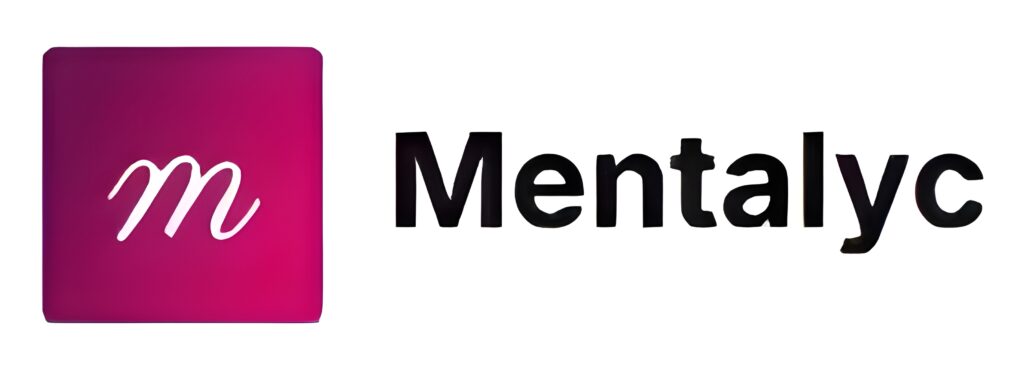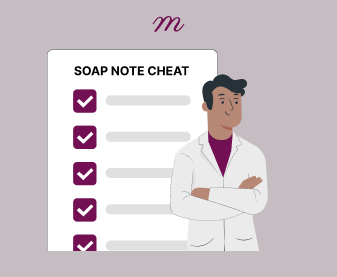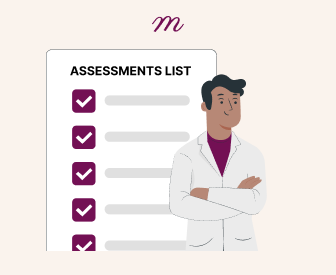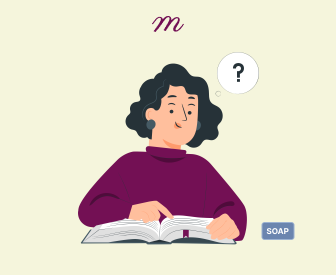Have your progress notes written for you automatically
Family therapists are the superheroes of the therapeutic world. They therapeutically join with multiple people in a room, many of whom are at odds with each other, while facilitating complex interventions that allow family members to feel seen, heard, and equally challenged. All with the agility of Spiderman, swinging from rooftop to rooftop, or in this case, family member to family member, without breaking a sweat.
A family therapist’s superpowers extend beyond the session as well. The real skill lies in documenting what happened in the session, no small feat when the face-to-face interactions demand a family therapist’s entire presence, mental acuity, and attention.
This is not to say an individual therapist’s work or therapy progress notes are a walk in the park. But it’s worth noting the more people in the therapy room, the more complex the dynamics and, therefore, the more complicated a therapist’s documentation becomes.
So grab your pen and your therapist cape (a neutral-colored cardigan will do), and let’s dive into the world of frequently asked questions about family therapy notes.
What are Family Therapy Notes? And How Do They Compare With Individual Therapy Notes?
Like individual therapy documentation, family therapy notes are part of clinical care that documents the interactions, reports, assessments, and observations made during a session. However, the added layer of multiple people and the dynamics between them all happening in the room simultaneously means added consideration for the family therapy note. Individual therapy focuses on the client’s internal experiences, external behaviors, feelings about the relationship with the therapist, and personal progress.
In contrast, family therapy explores the dynamics and interactions within the family system that affects each individual involved. An essential aspect of taking notes in family therapy is observing and objectively documenting the relational dynamics between family members, communication patterns, and power dynamics shifts. As more people are present and participating in family therapy sessions, family therapy notes often involve a broader scope.
What Information Do I Include When Writing a Family Therapy Note
How a therapist completes clinical documentation, including treatment plans, goals, and progress notes for family therapy sessions, typically depends on who pays for the mental health care. If a payor, such as an insurance company, is being used to cover part or all of the cost of the session, that typically means it is billed under one of the participating family members. The family member it is billed under must meet medical necessity to have the service covered and becomes the identified patient for charting purposes.
If the family is paying for their service out of pocket and not using a 3rd party payor, the family is the patient. This means the clinical documentation equally covers progress, interventions, and observation of all participating family members.
Whether an individual or multiple family members are the focus, there are several elements to consider when writing an effective family therapy note.
- Identify Participants Document who was present in the session. Also important is recording who was absent and whether this absence was planned.
- Session Summary Provide a concise overview of the session, including any significant events, interventions, or interactions that took place. Describe therapeutic techniques or exercises used during the session and how they address or relate to the family’s treatment goals.
- Goals and Treatment Plan When a therapist knows the note must include a comment on the progress towards the family’s identified treatment goals, they will be more likely to ask about the goals, thus keeping treatment efficient and on track. Documenting weekly goals additionally gives insight into whether progress is proceeding and if any adjustments to the treatment plan and goals should be made.
- Observations and Reflections Therapists may include notable observations, dynamics, or patterns that played out during the session. Therapists must focus on observable behaviors rather than interpretations.
Family Therapy Note Example
Here is an example of a family therapy session note in GIRP format from a made-up session with The Parr family from the Pixar movie The Incredibles. Present in the session were Mrs. Incredible, Mr. Incredible, Violet (14 years old), Dash (10 years old), and Jack-Jack (1 year old). The family has opted to use their superhero health insurance, so the sessions are being billed under Violet as the identified patient. In the note, Violet is referred to as a ‘client.’
Goal
Support the client in decreasing social isolation through self-esteem building and developing confidence in healthy social connections. Facilitate communication among family members to promote the client’s sense of connection in the family unit.
Intervention
The client, the client’s mother, father, and 2 brothers were present in the session. The therapist facilitated art therapy activity with the family members, encouraging each member to express their individuality through art, followed by members incorporating parts of their art pieces into one another’s work. The therapist engaged the family in discussion during art activity around recent stressors in the home due to the mother’s travel schedule for work.
The therapist provided validation and empathy to the client when expressing her emotions.
The therapist utilized cognitive challenging and cognitive reframing to address irrational thoughts expressed by the client.
The therapist engaged the family in role-playing at the end of the session. Supporting family members in expressing care for one another and exploring the use of assertive communication to set boundaries and express needs.
Response:
The client showed a willingness to explore her emotions and actively participated in the session. She expressed insight into the impact her negative self-perceptions have on her self-esteem. She additionally acknowledged negative self-perceptions lead her to socially isolate, including from friends and family members. The client appeared receptive to hearing from her brother about how this negatively impacts him.
Plan:
The client agreed to homework to engage with the family in nightly dinners or walks. Additional homework client agreed to includes practicing positive self-affirmations daily to challenge negative self-perceptions.
How Should I Format Family Therapy Notes?
While there are no strict formatting rules for family therapy notes, adopting a consistent structure can enhance organization, ease of writing, and readability. The note in the example above uses the GIRP format. A family therapist might also choose to use any mental health note format they are familiar with. Depending on the therapist’s style, a narrative paragraph form may also be preferable. Whatever format a family therapist chooses, each note should adhere to the following.
Guidelines for Documenting Family Therapy Interventions and Techniques Used
Describe the Intervention Clearly describe the technique or intervention used.
Specify the Purpose. Explain why the intervention was chosen. Typically, therapists choose their approach based on the family’s treatment goals.
Capture Client Responses Document the family’s reactions, responses, or any notable changes in behavior from a family member resulting from the intervention. It is common to include multiple family members’ responses. This leads to a lengthier progress note but ensures a thorough and accurate reporting of the session.
What are the Legal and Ethical Considerations for Family Therapy Notes?
There are many legal and ethical considerations for family therapists to hold in mind regarding clinical documentation.
- Maintain Confidentiality Safeguard the privacy and confidentiality of the family’s information by securely storing your notes and only sharing them with authorized individuals or agencies.
- Know Who Holds the Privilege If a family member asks to see your family therapy notes, it is essential to understand the legal requirements and your professional, ethical obligations for responding to this request. Consult your local laws and regulations regarding access to family therapy records. Your malpractice insurance or a professional membership organization you belong to, such as NASW, AAMFT, or APA, are other reputable options to seek advice from on this topic.
- Retention Period and Disposal Guidelines How long a therapist must keep family therapy notes varies by state. Additionally, there are different retention requirements when minors are involved versus only adults. Licensing boards and state-wide professional membership organizations are great resources to consult with on this topic and regarding proper guidelines for the disposal of records to protect client confidentiality.
- Get Informed Consent It is best practice to have a signed Consent for Treatment form from each participating family member. Just like in individual therapy, this helps ensure that each family member knows the potential risks and rewards of treatment, the therapist’s policies, and limits to confidentiality. Having clients sign Consent for Treatment forms before starting family therapy is legally required in some states, such as California.
What are Best Practices for Writing Family Therapy Notes?
Writing effective family therapy progress notes requires clarity, confidence, and an organized approach, which is easier said than done amid chaotic family dynamics. However, here are some best practice tips to make it easier and help you master the art.
- Use Clear and Concise Language. Write in a way that both professionals and clients easily understand. Avoid jargon and unnecessary technical terms.
- Focus on Observable Behaviors Describe specific actions, interactions, and reactions during the session rather than making assumptions or interpretations.
- Be Objective. Maintain a neutral perspective and refrain from injecting personal biases or judgments into your notes.
- Use Documentation to Keep Therapy Focused Family therapy progress notes should read like a story when put together. When a therapist keeps this in mind, it increases the likelihood of an issue or unhelpful relational pattern being thoroughly resolved instead of addressing separate issues coming up every week. Additionally, each note should comment on progress towards the identified treatment goal. Subsequently, suppose there is no progress, or the family reports a new issue every week and cannot focus. In that case, it might be time to discuss the treatment plan and the appropriateness of the identified goal.
- Highlight Progress and Setbacks Document changes, improvements, or challenges observed in the family’s functioning. This might look like commenting on progress, a positive interaction, or a demonstration of family strengths in addition to noting areas the family is still working on and developing in.
What is the #1 Challenge to Writing an Effective Family Therapy Note? And How Can I Make it Easier?
It is not uncommon for family therapists to experience their own level of emotional drain following a session. This is because they hold dual awareness as a participant-observer for an hour or more, facilitating interventions, observing interactions, looking for patterns, and intuitively guiding conversations while recalling and drawing upon understanding from previous experience, reading, and training. All of this while family members are interacting with one another, which, depending on the family, may look like yelling matches, politely avoiding a heavy topic that is screaming for resolution, or a mix of the two.
All this to say, a family therapist must be 100% mentally present during a session. It is an understatement to say it is challenging to go back after a session and record all that transpired in the therapy room. There is little mental space left to think about writing after the hour is over. Finding the right words and coping with the emotional overwhelm created when replaying the entire hour back in your head is challenging. Typically, this is when procrastination ensues. But putting off writing the note makes the therapist feel guilty and leads to greater difficulty remembering what happened objectively to write the note effectively.
This is why HIPAA-compliant AI software, like Mentalyc, should be on any family therapist’s list of required digital resource subscriptions. The software listens in on the session and transcribes what happened afterward. The therapist has the choice to pull up a transcription of the session or generate a progress note using critical moments of the session the AI program has been expertly trained to identify. From there, the therapist reviews and edits based on their own writing style, and with a few clicks, the note is done. Saving the therapist time, hassle, and procrastination guilt.
Conclusion
In conclusion, family therapy notes are the trusty sidekicks accompanying therapists on their heroic journey to bring about positive change within families. Like the capes and masks of superheroes, these notes hold power to capture the essence of each family’s unique story, documenting their triumphs and challenges along the way. Just as superheroes rely on meticulous preparation and attention to detail, therapists wield note-writing software, like their EHR and Mentalyc, to write effective and informative family therapy notes. With increased objectivity and a commitment to ethical guidelines, these notes become the unsung heroes that guide therapists and families toward a brighter, more harmonious future.
Disclaimer
All examples of mental health documentation are fictional and for informational purposes only.










